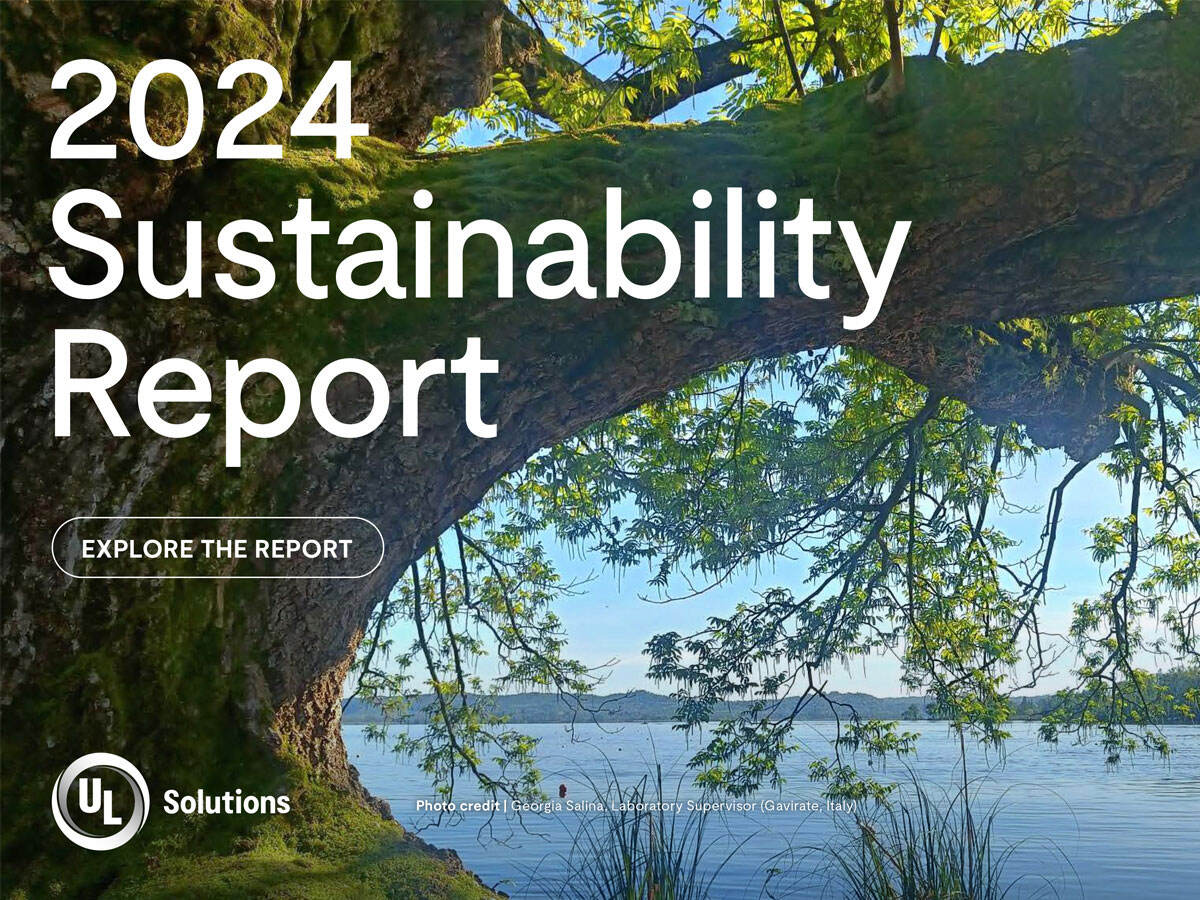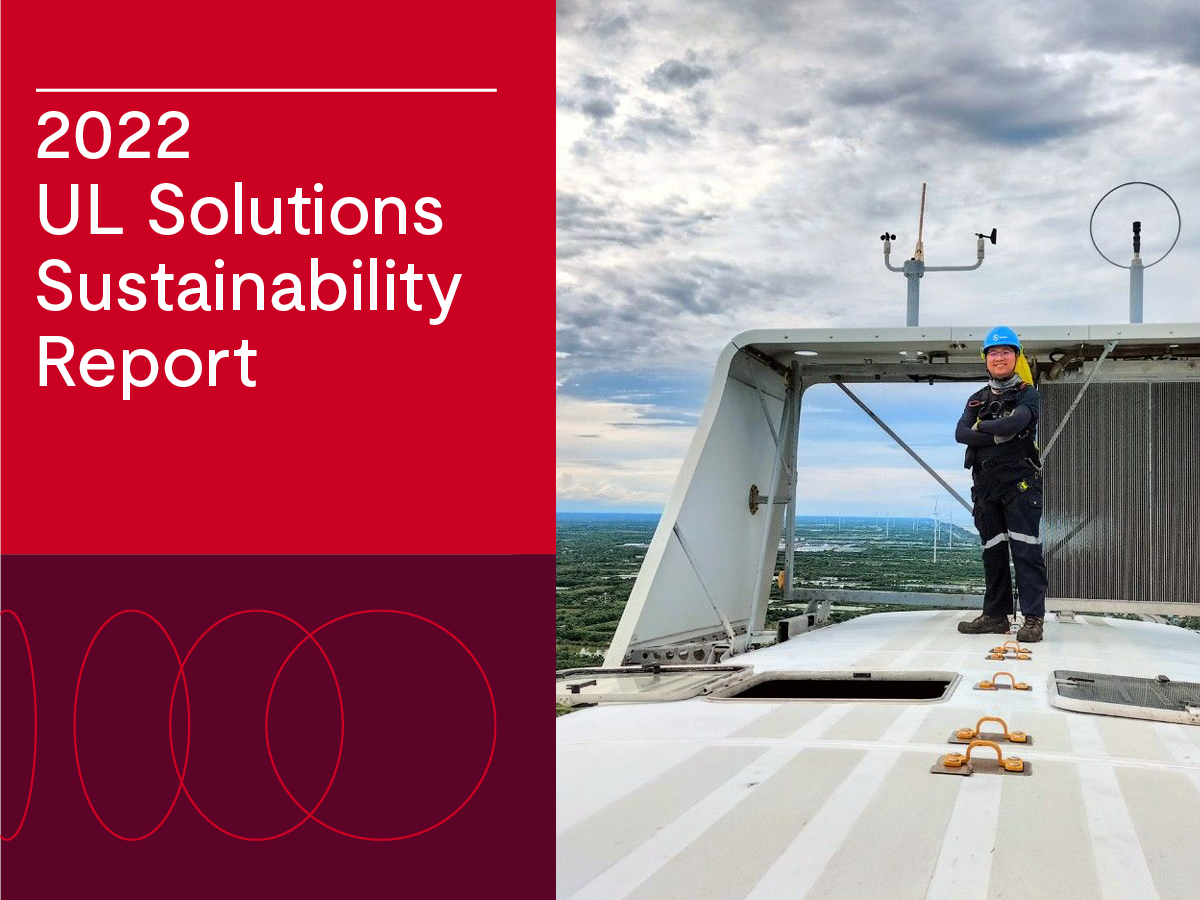At UL Solutions, we are scientists, engineers, problem solvers and innovators who work with visionary companies and positive changemakers.
We invite you to explore our reports to discover how we partner with our customers and put science to work to create a safer, more secure, sustainable and equitable future for all.
2024 Sustainability Report
In the 2024 report, we disclose our refreshed Core Values and updated progress on our 2030/2032 corporate sustainability goals. We share this report as a continued commitment to working for a safer and more sustainable world.
2023 Sustainability Report
In our 2023 report, we share our approved Science Based Targets initiative (SBTi) near-term science-based emissions reduction targets and 2030 UL Solutions corporate sustainability goals. We issue this report to address what matters most to you and to listen, learn, and evolve as we lead.
2022 Sustainability Report
In our 2022 Sustainability Report, we share our sustainability strategy and progress and our environmental, social and governance (ESG) management with our employees, customers and other valued stakeholders. We issue this report to address what matters most to you, and to listen, learn and evolve as we lead.
2021 Diversity and Inclusion Report
Our approach to diversity and inclusion is a fundamental part of our corporate strategy and our global culture.





